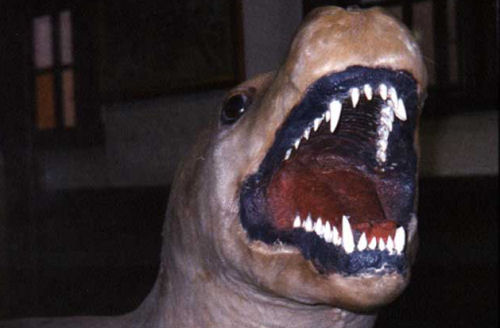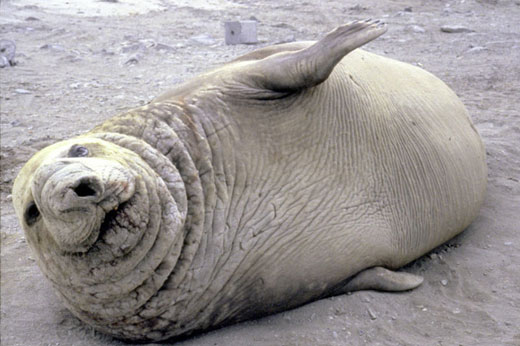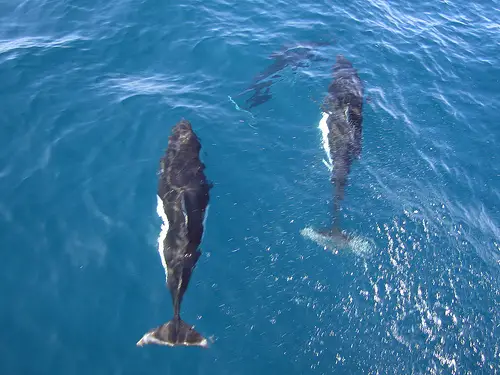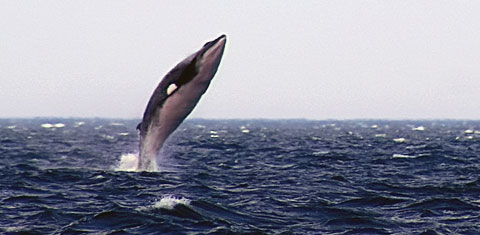Leopard Seal
Leopard Seal lives in the freezing Arctic waters, also it can wind up in territories far more to the north like South America, New Zealand and Australia. Leopard seals spend most of the time in the water. Sometimes they abandon water and appear on ice.
The Leopard seal is superbly acclimated to living in the water. He swims using his tail, which he swings from one side to the other. He changes the swimming direction with his upper extremities. They are rather long and turned into fins, therefore the seal, when moving them, can change direction very quickly.
The Leopard seal is considered to be unappeasable hunter because he doesn’t spare other seals. The Leopard seal doesn’t deserve such unsavoury reputation because seals are just one tiny part of his diet. Leopard seals usually hunt penguins. Seal looks for them in the water and attacks them from the bottom. When penguin has been captured, the seal shakes the penguin from one side to other and tears the penguin into pieces, making it easier to feed. The Leopard seals are very ravenous. As much as 73 kg of penguin meat has been found in one seal’s stomach. As the penguins swim as well as the leopard seals and are very alert mostly all the time, they manage to escape most of the times. The diet also consists of krills, but they are mostly in cub’s diet. Grown Leopard seals prefer penguins, fishes and octopuses.
In the Arctic summer lasts from November till January. Leopard seal females give birth during this period. Leopard seal females behave completely different from other seal species when they are pregnant. Leopard seal females are completely alone during the gestation period, unlike other seals who return to their brethren after copulation.
A few days before giving birth, females feed more intensively than usual. Just born cubs look like a miniature of their parents and the cub is not white like other seal cubs. When the Leopard seal is born it weighs approximately 26 kg and is about 150 cm long. After two or three weeks the cub goes in the water for the very first time. When the cub leaves its native ice cube and starts to live in the water, the mother stops taking care of him. In the water the cub mostly feeds off krills, at the same time learning to catch fishes and other bigger animals.
After giving birth, the female instantly returns into the water and mates with the male. After mating comes ovule fertilization but the development is stopped. The embryo doesn’t develop for three months. After that the impregnate ovule seizes in the uterus and the development continues only after a few months. This kind of prolonged pregnancy guarantees that the cub will be born only in the next summer when the conditions for his growth would be favourable.





Wow this is a great resource.. I’m enjoying it.. good article